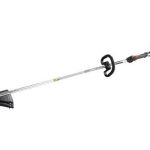Your dream has come true. You’ve bought a home in the suburbs. Now you can work on your next dream –- creating a garden.
You buy all the necessary tools, select a corner of your property for the location, you dig out the sod, stir up the soil, select plants from your local nursery and start to plant. However, the garden doesn’t establish.
You fertilize, water regularly, add some soil nutrients and still the garden doesn’t shape up. You decide that it might be the soil, so you perform a pH level test.
The test results are not good. You discover you have bad soil. You confer with salespeople at the nursery where you bought the plants and you seek advice from the horticultural department at the local college. You learn that in your case there is nothing that can be done.
Distraught, you destroy your attempt at a garden, re-sod the area, and figure that you will have to settle for houseplants or a raised garden.
Don’t sulk! There is another alternative. You get plant fruits and vegetables and other types of flora in straw bales.

Straw bales can be a great substitute for bad soil as a foundation for your garden.
(Courtesy: Yahoo.com)
Straw bales are a great vessel for a garden because it includes a nutrient-rich compost created by the straw itself. You just add a little fertilizer. Moreover, it’s weed-free.
What you need to create a garden with a straw bale foundation is:
· Straw bale, not hay bale. That’s because hay bales contain seeds that could grow into weeds.
· A soaker hose
· Tarp
· Fertilizer that is 20% nitrogen.
Hay bales are generally green while straw bales are typically golden yellow. You can find straw bale at many nurseries and garden stores or visit the Straw Bale Market website to discover where bales are being sold.
About 15 bales will offer the same plant production as a 20-foot-by-20-foot traditional soil garden.
Once you have purchased the bales, you will have to condition them. The process takes about 10 to 12 days.
First, lay the bales out, as you want them in a garden. Place them end-to-end in a row and turn them up on their sides.
Sprinkle the fertilizer over the bales and wash it in with a spray hose every other day. Water until some actually comes out from the bottom of the bales. Continue to water on days you don’t fertilize once a day until the bales are saturated.
You can start planting in the bales on the 12th day. Plant on the tops and the sides of the bales and space the plants as you normally would.
If you are using seeds rather than plants, lay down 1-inch to 2-inches of potting soil on top of the bales.
Once the garden is started, there isn’t much maintenance required. It is recommended that you water the bales every day with a soaker hose or dripper system when it is hot. Place one hose down into the middle of the bale. Watering every two to three days during the spring and fall will suffice.
It is recommended that you cover the bales with a tarp when the temperatures get down to below 30 degrees or lower.
You can use the same straw bale two years in a row, but then it is suggested that you pile them together as compost for the following spring and start again with new bales.






